How to use geotextile fabric? Or how to install and maintain geotextile fabric? This topic tries to explain the the geotextile application processes including selection, transportation and installation. Geotextile fabric is the pearmeable and durable geosynthetic material widely used to filter, separate, reinforce, protect, retain or drain soil for civil construction applications such as landfill, mining, and road construction projects. As the leading geotextile manufacturer and service provider, GEOSINCERE has been dedicated to manufacturing and wholesaling geotextile and geosynthetics to worldwide customers since 2007. The followed are the common application conditions corresponding to the geotextile specifications on how to use geotextile fabric. If you have any suggestions about this article, please contact us at any time.
- How to select geotextile fabric? The common application scenario for most projects when using geotextile can be classified as followed.
- What kind of geotextitle is suitable for landfill project?
- What kind of geotextile can be used in mining project?
- What kind of geotextile can be selected to different in road construction projects?
Now we share some common use conditions to clarify the specifications in the geotextile fabric selection processes that will help you understand on how to use geotextile fabric.
For landfill projects, the main concern for geotextile fabric is chemical or other substances resistance in the exposure of leachate. For example, the geotextile fabric is often used as the separation layer to protect geomembrane from punctrue. In this condition, the non woven polypropylene geotextile is the ideal choice because it has the properties of chemical resistance. The non woven polypropylene geotextile is also the good solution for the mining project in this condition.
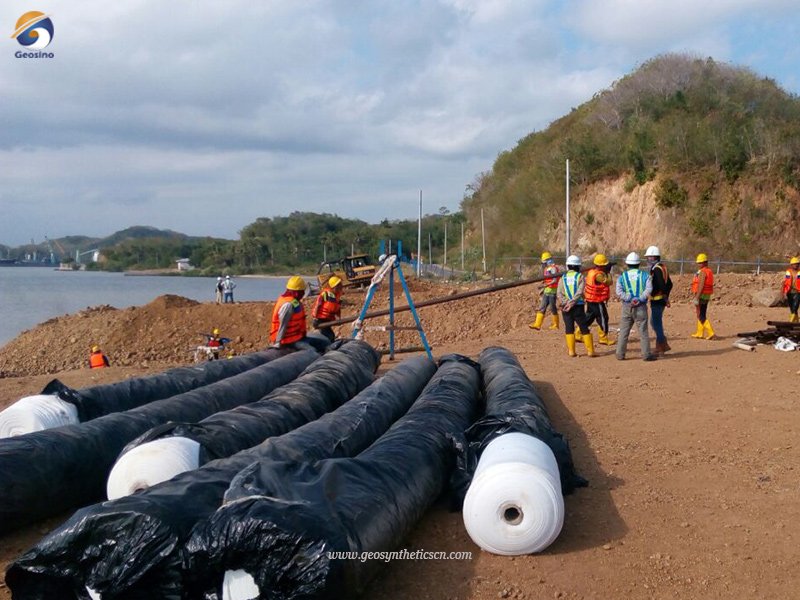
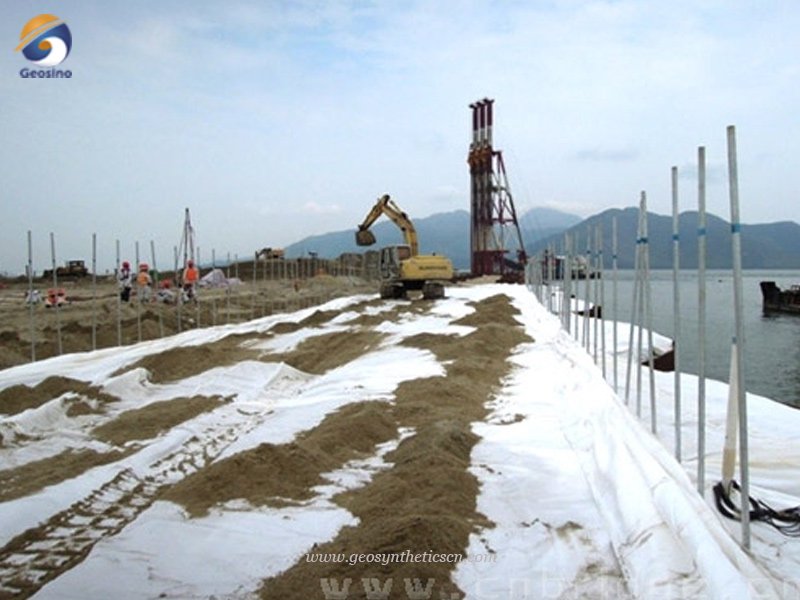
And when it comes to the road construction, its main function we apply will be it’s filtration and separation. Filtration means that the water can filter from the geotextile fabric. And the separation means that different materials can be stabilized. The main characteristics of geotextile are broadly classified as:
- Physical properties including specific gravity, unit weight, thickness, etc.
- Mechanical properties including tensile strength, tear strength, puncture strength, hydraulic properties, permeability, permittivit, etc.
- Degradation properties including biodegradation, hydrolyic degradation, chemical degradation, mechanical degradation, etc.
The geotextile fabric are used for reinforcement of roads, embankments, ponds, pipelines, and similar applications. Depending on the required different functions, geoetxtile fabrics are used in open-mesh versions, such as a woven or with a closed fabric surface, such as a non-woven geotextile fabric. The operation mode of a geotextile in any application is defined by five functions.
- Separation;
- Filtration;
- Drainage;
- Reinforcement;
- Protection.
Depending on the application, the geotextile performs one or more of these functions simultaneously.
(1)Separation Function. Separation is defined as flexible porous geotextile placed between dissimilar materials so that the integrity and the functioning of both the materials can remain intact or be improved. In transportation applications, separation refers to the geotextile’s role in preventing the intermixing of two adjacent soils. For example, by separating fine subgrade soil from the aggregates of the base course, the geotextile preserves the drainage and the strength characteristics of the aggregate material. The use of separation layer prevents pumping effect created by dynamic load and also helps the passage of water while retaining soil particles. In theses types of geotextiles, thickness and permeability are most important characteristic properties. Some of the applications areas are:
- Between subgrade and stone base in unpaved and paved roads and airfields.
- Between subgrade in railroads.
- Between land fills and stone base courses.
- Between geomembranes and sand drainage layers.
- Beneath sidewalks slabs.
- Beneath curb areas.
- Beneath parking lots.
- Beneath sport and athletic fields.
(2) Filtration function. The geotextile filtration function describes to be equilibrium geotextile-to-soil system that allows for adequate liquid flow with limited soil loss across the plane of the geotextile over a service lifetime. In filtration, geotextile fabrics can be either woven or non-woven, to permit the passage of water while retaining soil particles. Porosity and permeability are the major properties of geotextiles which involves in filtration function. These applications are also suitable for both horizontal and vertical drains using non woven geotextile fabrics.
(3)Drainage (Transmissivity) function.The geotextile drainage function is the ability of thick nonwoven geotextile whose three-dimensional structure provides water flow through the plane of the geotextile. Geotextile promotes a lateral flow thereby dissipating the kinetic energy of the capillary rise of ground water.
Application Areas of Geotextile Fabric
(1) Road Projects
The basic principles of geotextile fabric into a soil mass are the same as those utilized in the design of reinforced concrete by incorporating steel bars. The geotextile fabrics are used to provide tensile strength in the earth mass in locations where shear stress would be generated. Moreover, The woven and non woven geotextile fabric are used to allow rapid dewatering of the roadbed, the geotextiles need to preserve its permeability without losing its separating functions. Their filtration characteristics must not be significantly altered by the mechanical loading.
(2)Railway Projects
The woven geotextile fabrics or non-woven geotextile fabrics are used to separate the soil from the sub-soil without impeding the ground water circulation where ground is unstable. Enveloping individual layers with fabric prevents the material wandering off sideways due to shocks and vibrations from running trains.
(3)River Canals and Coastal Projects
Geotextile fabric can help to protect river banks from erosion due to currents or lapping. When used in conjunction with natural or artificial enrockments, they act as a filter. For erosion prevention, geotextile used can be either woven geotextile or nonwoven geotextile. The woven geotextile fabrics are recommended in soils of larger particle size as they usually have larger pore size. Nonwovens are used where soils such as clay silt are formed. Where hydrostatic uplift is expected, these geotextile fabrics must be of sufficiently high permeability.
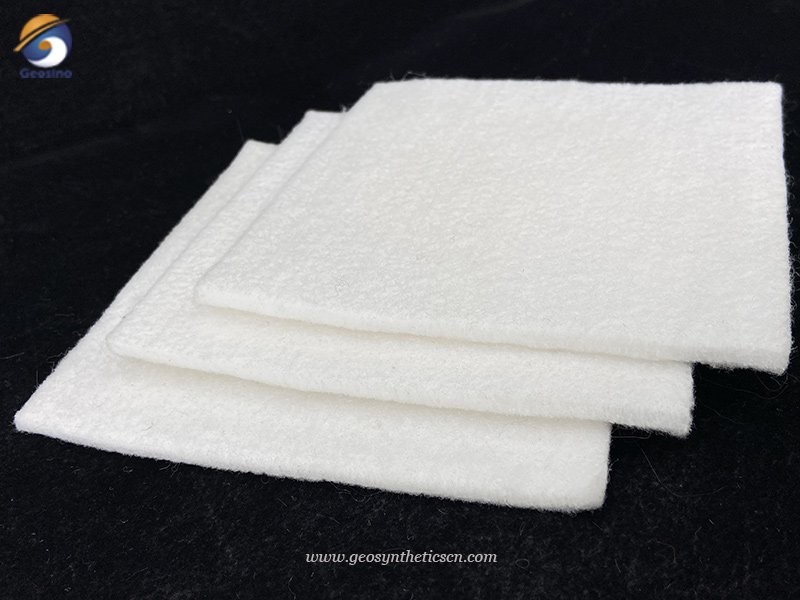
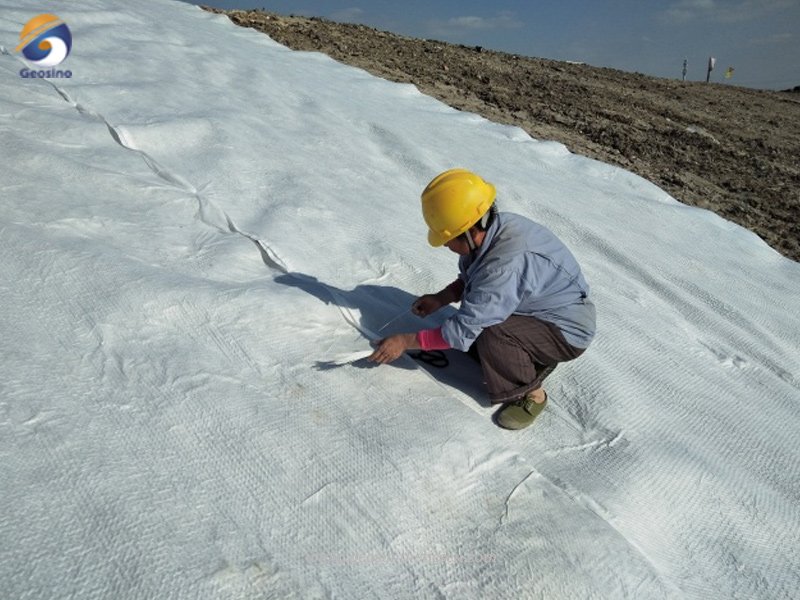
Quality Assurance Procedure
In order to use the geotextile fabric properly, strict quality assurance procedures are very important for the final geotextile products and also installation procedures. That is to say, quality assurance is the basis for topic – how to use geotextile fabric?
Following we provides an overview of the quality assurance procedure in non wowen geotextile, especially the staple fiber needle punched geotextile fabric, product manufacturing process. It’s mainly to help you understand the quality system and process during the production and the application.
(1) COMMITMENT TO QUALITY ASSURANCE
Quality assurance is our chief concern, GEOSINCERE has been dedicated to developing and manufacturing geotextile fabric since it foundation in 2007. Geotexile products have 10% or higher in properties than the project design requirement or the standard data. And our whole manufacturing procedure abide by the ISO management requirement through a documented quality system, and improve by the updated testing equipment and cooperation with global third party lab. This can successfully realize the onsite requirement and let it reflect on the final products and onsite projects.
(2) MANUFACTURING QUALITY ASSURANCE
GEOSINCERE has a strict quality assurance for each lot manufacturing goods. Each lot of goods we will test by our own fully equipped, well staffed laboratory with strict guidelines to get a instant results on final products. GEOSINCERE is also approved by the most rigorous third party GAL LAP laboratory and make sure goods are in compliance with standard. These procedures and requirements are frequently reviewed and adjusted to assure properties are higher or in accordance with current market demands or project designed specifications.
(3) MANUFACTURING QUALITY ASSURANCE DEPARTMENT
Quality assurance department will make sure that when final products meet the customer’s requirements properties that can be released and arrange shipment. The quality assurance staff are mainly responsible for monitoring, testing, and providing feedback to the manufacturing department. Each staff of the quality assurance team have to get strict training and be tested. When get certificate, they can work. The quality assurance team consists of the manufacturing quality assurance laboratories, engineering staff and manufacturing personnel. The combination of expertise and experience from these groups provide GEOSINCERE with the proper experience to maintain the highest level of product quality and customer service in the industry.
(4)PRODUCT IDENTIFICATION & DOCUMENTATION IN WAREHOUSE
This procedure mainly assure each rolls of geotextile goods can be traced when quality problems arise.
- Roll Numbering. Each roll of geotextile fabric is marked by a unique roll number and shift. The quality assurance laboratory maintains records documenting the raw material details and the final products testing information.
- Conformance Procedure. Testing results for each tested roll of product are checked against both customer’s specifications for compliance. The quality assurance laboratory approves those materials that meet these requirements can be arranged shipment.
- Non-Conformance. Material that does not meet minimum standards is given a roll number and store separately. It is rejected and separated from the approved stock rolls. The rejected material is then identified as non-conformance and will not be used or delivered. Final Geotextile products which can get up to the minimum standards, but does not meet a stricter customer’s specifications in special design,will not be allocated to that customer, but will be placed into inventory as a standard material.
- Documentation. Quality assurance certificates are provided to clients for their goods lot accordingly and it include the geotextile product all relevant quality assurance information about the material.
(5) RECORDS RETENTION
GEOSINCERE keeps the testing reports and/or samples for products produced and sold. Records and/or samples are maintained according to GEOSINCERE standard retention policy in lab.
(6)TESTING CAPABILITIES
GEOSINCERE incorporates the high capacity, state-of-the-art laboratory to do the testing which in US, Suzhou, Sydney etc. All quality assurance laboratories are accredited by the GAI-LAP Program.
Routine Testing. GEOSINCERE proceeds a strict quality assurance program, which exceeds all industry’s standard practices and/or customer’s specifications. The testing ranging from raw materials to finished goods and is adhered to by all quality assurance laboratories.
The laboratory equipment used by GEOSINCERE is the most modern equipment available and it meets or exceeds the requirements of all the test standards used. Test frequencies and number of test specimen per sample are established based on statistical analysis and complexity of procedures.
Other Testing Capabilities. In addition to routine testing, GEOSINCERE also choose third party testing when special design or properties are required.
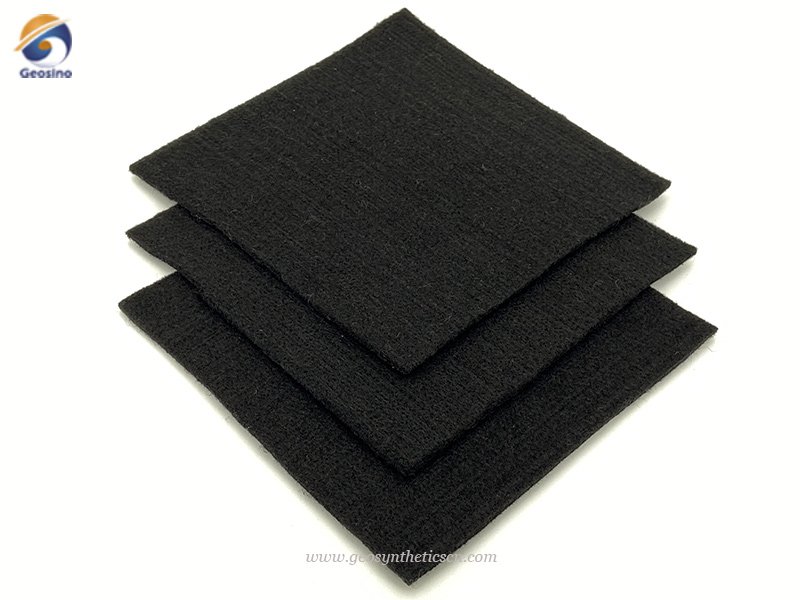

(7)FINAL GOODS QUALITY ASSURANCE
GEOSINCERE has strict quality system to ensure product quality.
- Raw material Inspection and Testing. The raw material supplier verification and material inspection procedure is the first step. The prime fiber should be purchased from approved suppliers. Fiber suppliers are required to provide a Certificate of Analysis (COA) for each shipment of fiber prior to being utilized in production.
- And the fiber supplier we appraised each year.The lab manager ensures that filament or staple fiber received by the company meets the specified requirements. Requirements for fiber properties are listed in GEOSINCERE quality system documents and are communicated to suppliers on the purchase order. Any fiber lot not meeting the specified requirements is either returned to the supplier or regraded.
- Needle free conformance by metal detector. GEOSINCERE claims to clients that the final goods is needle free for geotextile. And more than three procedures are installed metal detectors make sure the goods are from broken needles and other metal objects which is safe for work onsite .
- Online Automatic Mass Distribution Control. GEOSINCERE applies an in-line automatic mass distribution control system. It can continuously measures mass distribution across roll width and feeds that information to an integrated process control system. If the product mass deviates from the maximum allowable variation, the process control system automatically makes the necessary adjustments to bring the product back to the required range. Using this in-line sensor and the integrated process control system, GEOSINCERE produces the most consistent and uniform geotextile product available in the industry. And through this system, we also have been approved by the local inspection institute CRCC.
- Testing standard. GEOSINCERE tests geotexile products based on the following standards: A.Mass per Unit Area, ASTM D 5261; B.Grab Tensile Strength and Elongation, ASTM D 4632; C.Trapezoidal Tear Strength, ASTM D 4533; D.Puncture Strength, ASTM D 4833.
Nonwoven geotextile rolls are sampled for quality assurance testing according to frequencies required. An approximate cutting by roll width is proceeded for quality assurance testing. Test specimens are taken from five positions across the width of the roll with 30 x 30 cm size.It is taken from one of the five positions on an alternating basis.
(8) Product Shipping
Only geotextile products that have been tested and approved can be shiped. All shipments are packaged according to industry’s standard practices and/or customer’s specifications for export packing. Only approved handling methods are used to move rolls into and out of shipping containers.
Packing for export include virgin material packing by PE liner with UV resistance and strengthened by strips and unloading belt. GEOSINCERE p also use special technology to maximize the loading capacity to save transportation cost for clients.
(9) Onsite installation of geotextile
- Storage, transport and disposal of geotextile The geotextile roll should be protected from damage before the installation. Geotextile rolls should be stored in a flat, water-free place, no higher than four rolls and show the identification marks. Geotextile rolls must be covered with HDPE film to prevent UV aging. Keep the label information complete during storage. Geotextile rolls must be protected from damage during transport, including on-site transport from the storage site of materials to the place of work. The geotextile roll that has been physically damaged must be repaired. Severely worn geotextile rolls cannot be used. Any geotextile cloth that comes into contact with leaking chemical reagents is not allowed to be used on engineering.
- Method of laying earthworks. When laying roll, Geotextile surface to be flat, and appropriate to leave a deformation margin.The installation of geotextile is usually used to hot air welding and sewing methods. The width of stitching and welding is generally more than 10cm, and the sewing width is generally more than 20cm.
- The sewing of the geotextile must be carried out continuously. Before overlapping, it must overlap at least 15cm. The minimum sewing distance is at least 25mm from the weld edge, and the thread used for stitching shall be a resin material with a minimum tension of more than 60N and have the same or exceeding chemical corrosion and UV resistance as geotextile. Any “leak needles” on the sewn earthwork geosynthetic cloth must be re-stitched where they are affected. Appropriate measures must be taken to prevent soil particulate matter or foreign material from entering the geotechnical layer after installation.
- In the construction, hot air welding is the preferred method of geotextileconnection, that is, with a hot air gun to connect two pieces of geotextile. In wet (rainy and snowy) weather can not be hot adhesion connection, geotextile should take another method of sewing connection method, that is, with a special sewing machine for double sewing The minimum width is 10cm when stitching, 20cm when naturally bonded, and 20cm when hot air is welded.
How to use geotextile fabric is a systematic topic which mainly includes raw material, production, quality assurance, transportation, installation, etc.
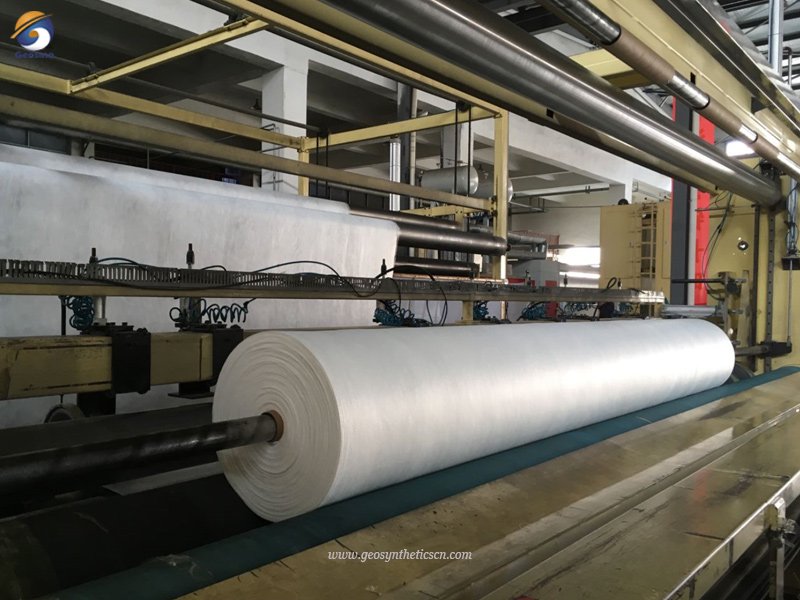
About GEOSINCERE
As the professional geotextile and geosynthetics manufacturer and wholesaler, GEOSINCERE is always committed to geotextile research and development, manufacturing and installation services. We can provide our customers with most extensive lines of geotextiles and geomembranes for civil, mining, environmental and aquaculture engineering applications. GEOSINCERE has been keeping on investing in technological innovation, manufacturing facilities improvement and turnkey engineering abilities. Our extensive lines of geosynthetics products are well known for their ensured quality, high performance, excellent durability and best cost effectiveness. GEOSINCERE brand geotextiles and other geosynthetics products and solutions can meet your requirements by our solid technologies, innovative engineering solutions and excellent customer services. Hope to be your partner.
Our main innovative, high quality products include geotextiles, geomembranes, geogrids, geocells, geosynthetic clay Liner, and drainage boards, etc al. GEOSINCERE customers are from more than 100 countries including America, Australia, France, Sweden, UK, Turkey, Hong Kong, Hungary, New Zealand, Poland, Mexico, Ecuador, Brazil, Pakistan, Bangladesh, Thailand, Vietnam, Malaysia, Indonesia, Singapore, Philippines, Sri Lanka, India, UAE, Saudi Arabia, Qatar, Kenya, Ghana, Ethiopia, Somalia, Nigeria, South Africa, Swaziland, Mongolia, etc.
GEOSINCERE offers both high quality geosynthetic products but also professional design and installation service. OEM, ODM, custom development and fabrication are also available. If you have any questions or inquiries, please fill and submit the following form, we will reply as soon as possible.
Error: Contact form not found.





